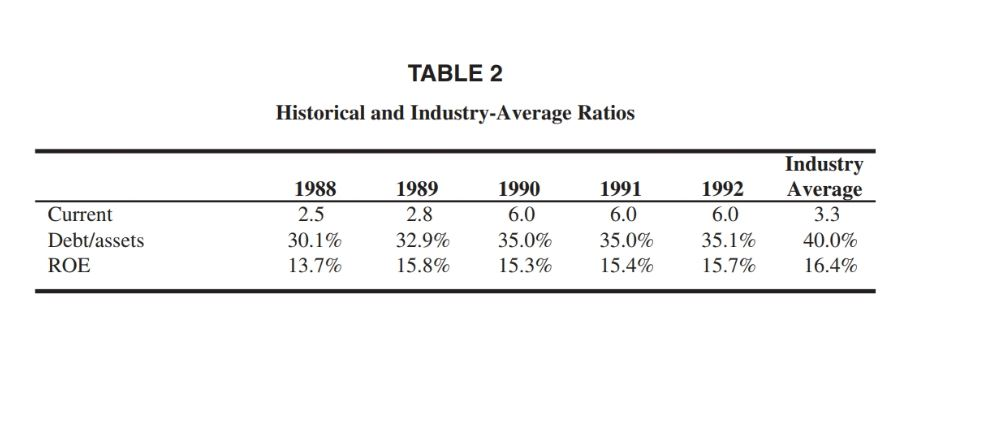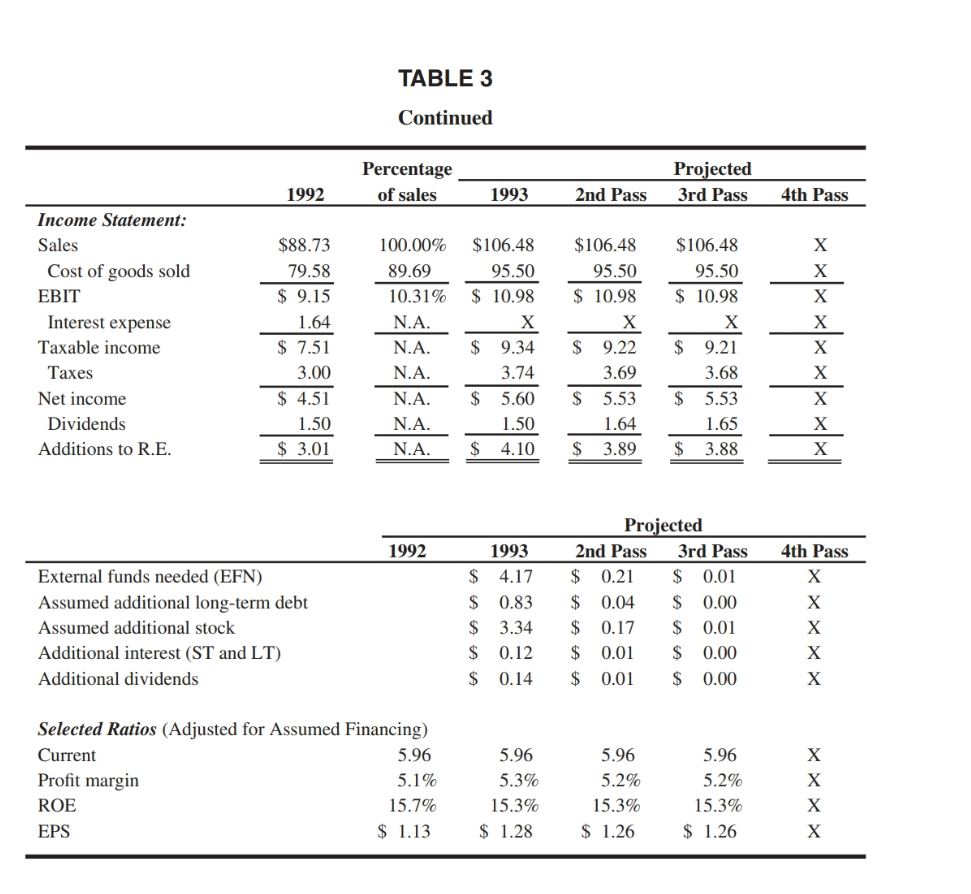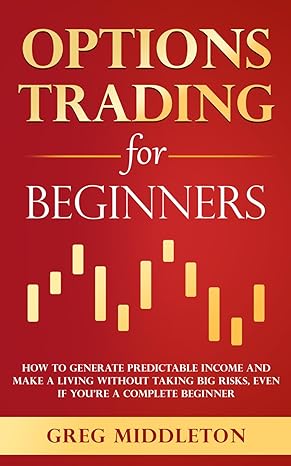Question
Case 15 Case 37 Space-Age Materials, Inc. Financial Analysis and Forecasting Directed Most people think of pottery and figurines when they think of ceramics. However,
Case 15 Case 37 Space-Age Materials, Inc. Financial Analysis and Forecasting Directed Most people think of pottery and figurines when they think of ceramics. However, ceramic mate-rial is particularly well suited for use under high temperatures and intense pressure, especially if light weight is desirable. Because of these properties, ceramics are ideal for use in high-performance engines used in turbocharged automobiles, jet aircraft, and heavy trucks. Unfortunately, though, ceramics are also very brittle, and this characteristic has long prevented their widespread use in such engines. In 1986, however, Daniel Alexander, a materials engineer, and Roger Avalon, a chemical engineer, succeeded in combining silicon carbide fibers with ceramic materials in a manner that pre-served the desirable properties of ceramics but eliminated most of the brittleness. They then formed Space-Age Materials, Inc., and used their own limited capital to build 50 prototype turbine blades with the new ceramic material. On the basis of extensive testing by a number of large aerospace companies, the new firm began receiving production-quantity orders for the new blades. The new business was an immediate success. Production began in the summer of 1987. Oper-ating losses were incurred during the first short year, but the company has earned a profit in each sub-sequent year. During 1991 and 1992 the number of new orders exceeded Alexander and Avalons projections. By the end of 1992, it was obvious to all-including Alexander and Avalonthat addi-tional expansion would be required if the firm was to attain its full growth potential or even to keep competitors from eroding its position. Ironically, Alexander and Avalons technological successes were making their financial fore-casts incorrect. Consequently, they hired Sue Li, an MBA, as the companys financial manager to develop a detailed financial plan. Li knew that the company had been lucky and that some large chemical companies, including Monsanto and DuPont, were thinking about entering the market. Space-Age, however, had not been sitting idle. In 1991, the companys research-and-development people produced some exciting breakthroughs, while at the same time there was an increasing trend toward using ceramics in jet engines. As a result, it became apparent that additional funds were probably needed if the company were to maintain, let alone increase, its market share. Therefore, a good financial plan accurately forecasting the future needs of the company is critical to the future success, and probably to the continued existence, of the company. Li organized Space-Ages financial planning process into five steps: (1) A study is made of basic trends in the materials industry and also in the aerospace and other markets where Space-Age expects to operate. How will our customers needs change over the next five years, and what can we do to meet any existing or developing needs?
(2) A set of pro forma financial statements is developed and used to analyze the effects of alter-native operating plans on projected profits and financial ratios. The plan encompasses five years, with the projections being relatively detailed for the coming year and much less detailed for the following four years. The entire plan is updated every year in November. (3) The specific financial requirements needed to support the companys base-case operating plan are determined. This information is obtained from the pro forma statements. (4) The specific sources of capital that will be used to meet the financial requirements are identified. (5) The initially projected financial statements are then modified to include the addition of the capital needed to finance the projected assets. This involves adjusting the pro forma income statement to include the interest charges associated with any additional debt and an adjust-ment to dividends paid if new stock must be issued. These modifications change the initially projected retained earnings, and thus change the external funds needed to finance the asset expansion. These feedback effects require the use of an iterative process to produce a consistent final set of financial statements. In the past, all this has been done manuallywhich takes a good bit of timebut Li has been working to develop a computerized model to speed up the process. Space-Ages 1988 through 1992 historical financial statements, along with three key ratios and industry averages, are given in Tables 1 and 2. The company was operating its fixed assets at full capacity in 1992, so its $88.73 million of sales represented full-capacity sales. Since the firms marketing department is forecasting a 20 percent increase in sales for 1993, new assets will have to be added. For planning purposes, Li assumes (1) that accounts payable and accruals will sponta-neously increase in accordance with standard industry practices, (2) that new long-term capital will be raised in accordance with the firms target capitalization ratios, which call for 20 percent long-term debt and 80 percent common equity (measured at market value), and (3) that short-term bank loans, reported as notes payable, will be assumed to grow along with sales, since they are used to finance the firms working capital needs. (Note that new common equity includes both new retained earnings and new common stock sales.) Space-Age currently has 4 million shares of common stock outstanding, and the market price is $9. The dividend in 1992 was $0.375 per share, and management does not intend to increase the dividend in 1993. New long-term debt would carry a 12.0 percent coupon, and it would be issued at par. New short-term debt will cost 10.0 percent. The combined federal and state tax rate is 40 percent. Space-Ages senior managers go off on a one week retreat each November to work on the five-year plan and the budget for the coming year. Prior to the retreat, the various division managers must prepare reports which the top executives will review beforehand and then discuss at the retreat. As financial manager, Li normally prepares some first approximation financial forecasts which are then modified during the retreat as a result of strategic decisions made at that time. The modified state-ments are used to show the financial implications of different operating plans. However, Li recently underwent a difficult ulcer operation and, because of a slow recovery, she will neither be able to attend the retreat, nor to prepare the background report for it. Therefore, as her assistant, ready or not, you must assume her duties. Even though she could not get out of bed, Li called you to the hospital to discuss what needed to be done. First, Li told you she had almost finished a computerized model that would aid in the pro-cess. Li also indicated that the model needed to be debugged, or at least checked out, by first mak-ing by-hand projections and then seeing if the model generated the same set of data. If a discrepancy is discovered, it will be necessary to find out where the error lies. Li also cautioned you that it will be necessary to explain to the executives how any changes in operating conditions would affect the funds requirements and also how any changes in the financing mix would affect other financial variables, including external funding requirements, earnings per share, and the stock price. In particular, Li warned you not to try to defend the inputs to the forecasting process; rather, the critical thing is to be able to make adjustments in the likely event the senior executives dont like all the assumptions used in the forecast. As Li pointed out, Its the top managers job to under-stand the business and to make the final assumptions used in the forecast and the budget. Its our job to tell them how those assumptions interact, and what the final outcome will be if their assump-tions hold true. We ought to use reasonable inputs for our report and basic forecasts, but our real job in the planning process is to show top management what will happen under different operating conditions. Finally, you will also have to make a presentation to the companys management. In prepara-tion for the presentation, answer the following questions.




Question:
9. What are some other methods that could be used to forecast the asset-and-liability balances and, thus, the forecasted financial requirements? If the senior executives asked you to incor-porate these procedures into your analysis, how would you do it, how long would it take, and what additional data would you require?
1988 0.75 2.85 1989 1990 1991 1992 Balance Sheets: Cash and securities Accounts receivable Inventories 4.37 7.10 Current assets Net fixed assets Total assets 3.99 $ 8.40 12.60 $21.00 $10.92 16.38 $27.30 $13.65 20.48 $34.13 $17.71 26.63 $44.34 $15.00 0.29 0.84 Accounts payable Notes payable Accrued wages & taxes 0.53 0.75 0.54 0.65 0.94 0.69 2.27 9.67 2.18 0.42 0.90 0.30 2.40 Current liabilities Long-term debt 12.57 $15.54 $10.55 11.93 12.8613.897.49 7.74 $ 9.56 $ 4.51 Total liabilities Common stock Retained earnings 4.88 $17.74 $27.30 0.06 Total common equity Total liabilities & equity $14.09 $21.00 $10.49 $22.19 $28.80 $34.13$44.34 $15.00 1988 $30.00 1989 1990 1991 1992 Income Statements: Sales $54.59 45.76 3.28 $42.00 35.08 2.52 4.40 0.69 3.71 1.49 $68.25 57.21 $88.73 74.25 5.33 $6.94 9.15 Cost of goods sold 25.37 Depreciation Interest expense Taxes Dividends Gross profit 5.68 S 2.28 T axable income 0.96 Net income 1.50 Additions to R.E. 2.22 Note: The figures in the tables were generated using a Lotus model; therefore some numbers may not add up properly because of rounding differences 1988 0.75 2.85 1989 1990 1991 1992 Balance Sheets: Cash and securities Accounts receivable Inventories 4.37 7.10 Current assets Net fixed assets Total assets 3.99 $ 8.40 12.60 $21.00 $10.92 16.38 $27.30 $13.65 20.48 $34.13 $17.71 26.63 $44.34 $15.00 0.29 0.84 Accounts payable Notes payable Accrued wages & taxes 0.53 0.75 0.54 0.65 0.94 0.69 2.27 9.67 2.18 0.42 0.90 0.30 2.40 Current liabilities Long-term debt 12.57 $15.54 $10.55 11.93 12.8613.897.49 7.74 $ 9.56 $ 4.51 Total liabilities Common stock Retained earnings 4.88 $17.74 $27.30 0.06 Total common equity Total liabilities & equity $14.09 $21.00 $10.49 $22.19 $28.80 $34.13$44.34 $15.00 1988 $30.00 1989 1990 1991 1992 Income Statements: Sales $54.59 45.76 3.28 $42.00 35.08 2.52 4.40 0.69 3.71 1.49 $68.25 57.21 $88.73 74.25 5.33 $6.94 9.15 Cost of goods sold 25.37 Depreciation Interest expense Taxes Dividends Gross profit 5.68 S 2.28 T axable income 0.96 Net income 1.50 Additions to R.E. 2.22 Note: The figures in the tables were generated using a Lotus model; therefore some numbers may not add up properly because of rounding differences
Step by Step Solution
There are 3 Steps involved in it
Step: 1

Get Instant Access to Expert-Tailored Solutions
See step-by-step solutions with expert insights and AI powered tools for academic success
Step: 2

Step: 3

Ace Your Homework with AI
Get the answers you need in no time with our AI-driven, step-by-step assistance
Get Started


